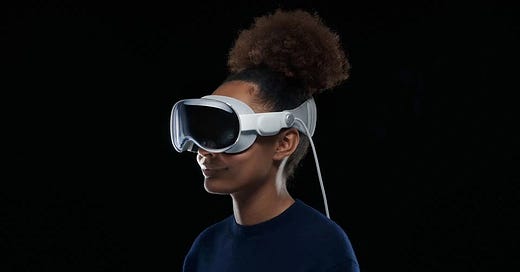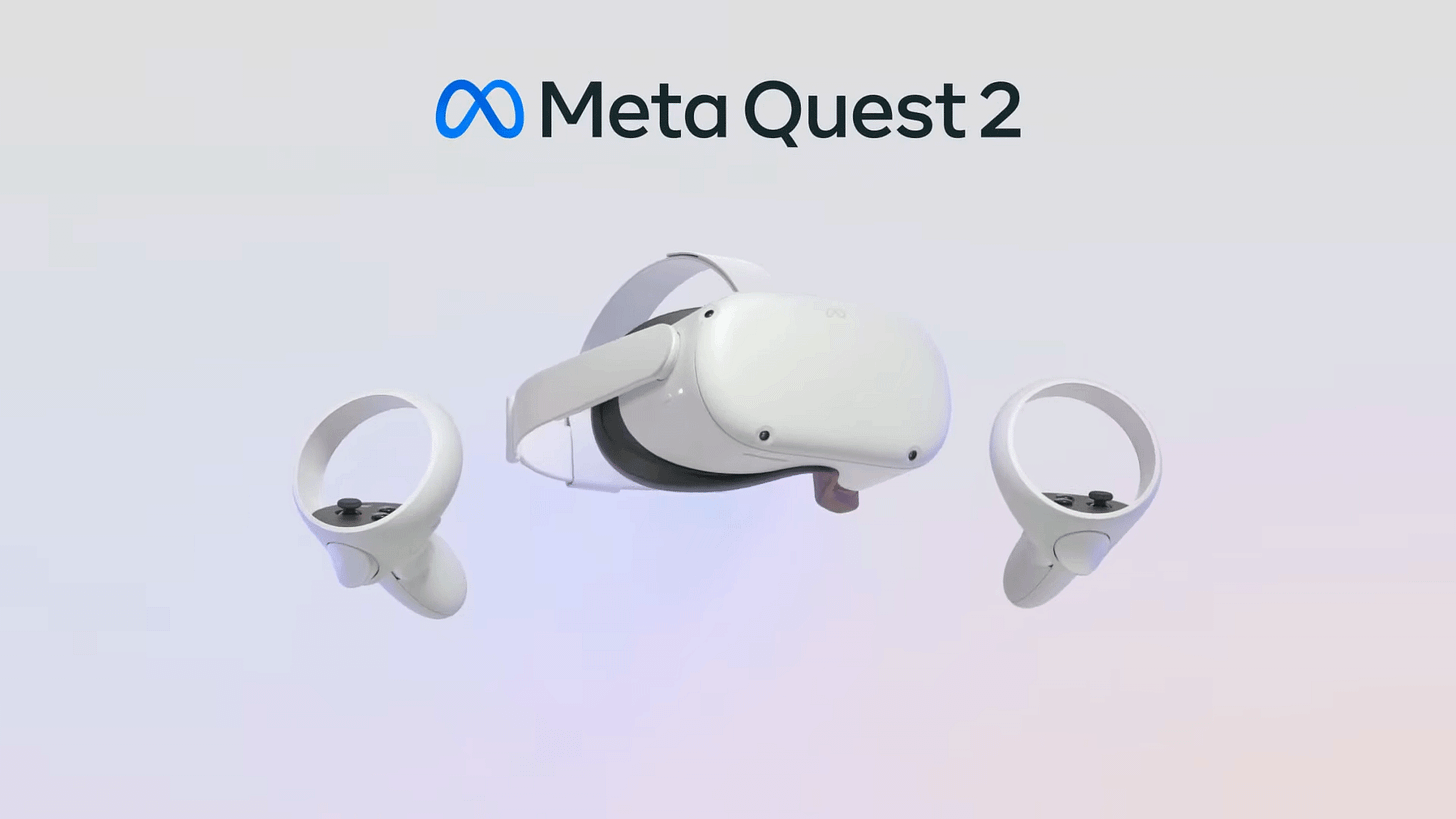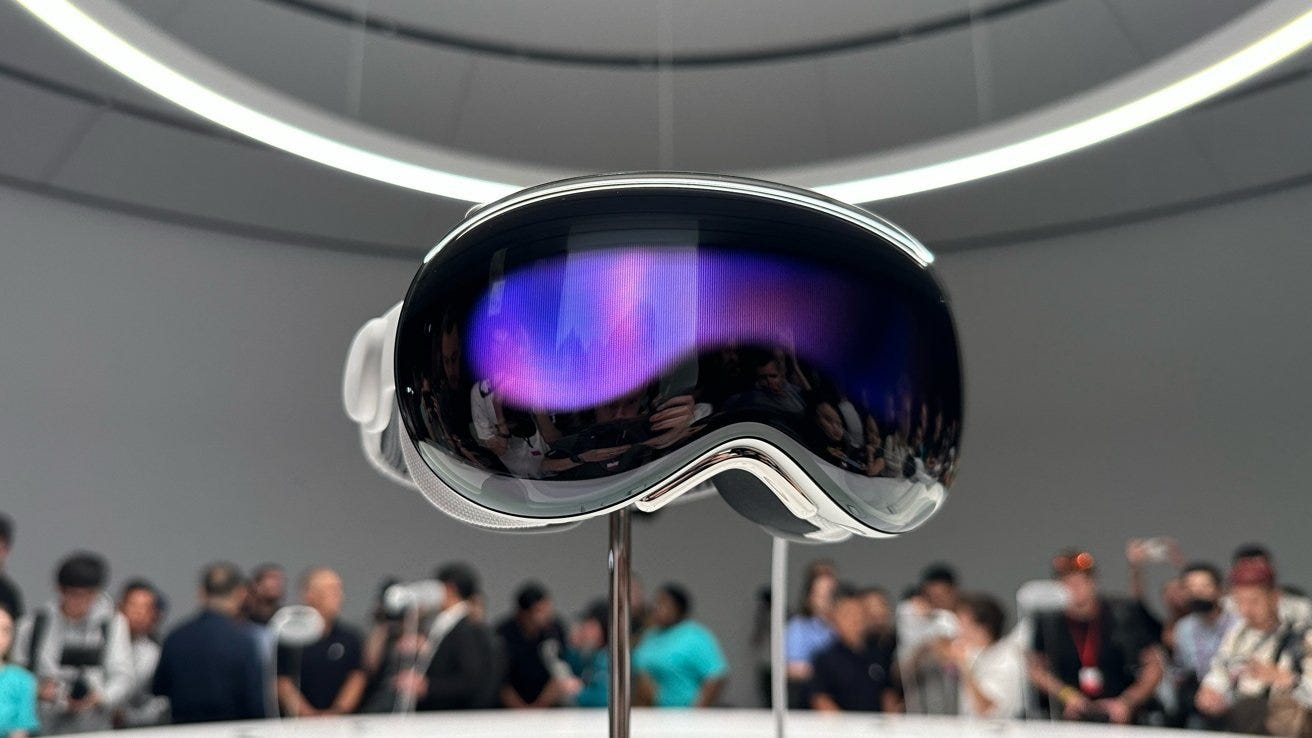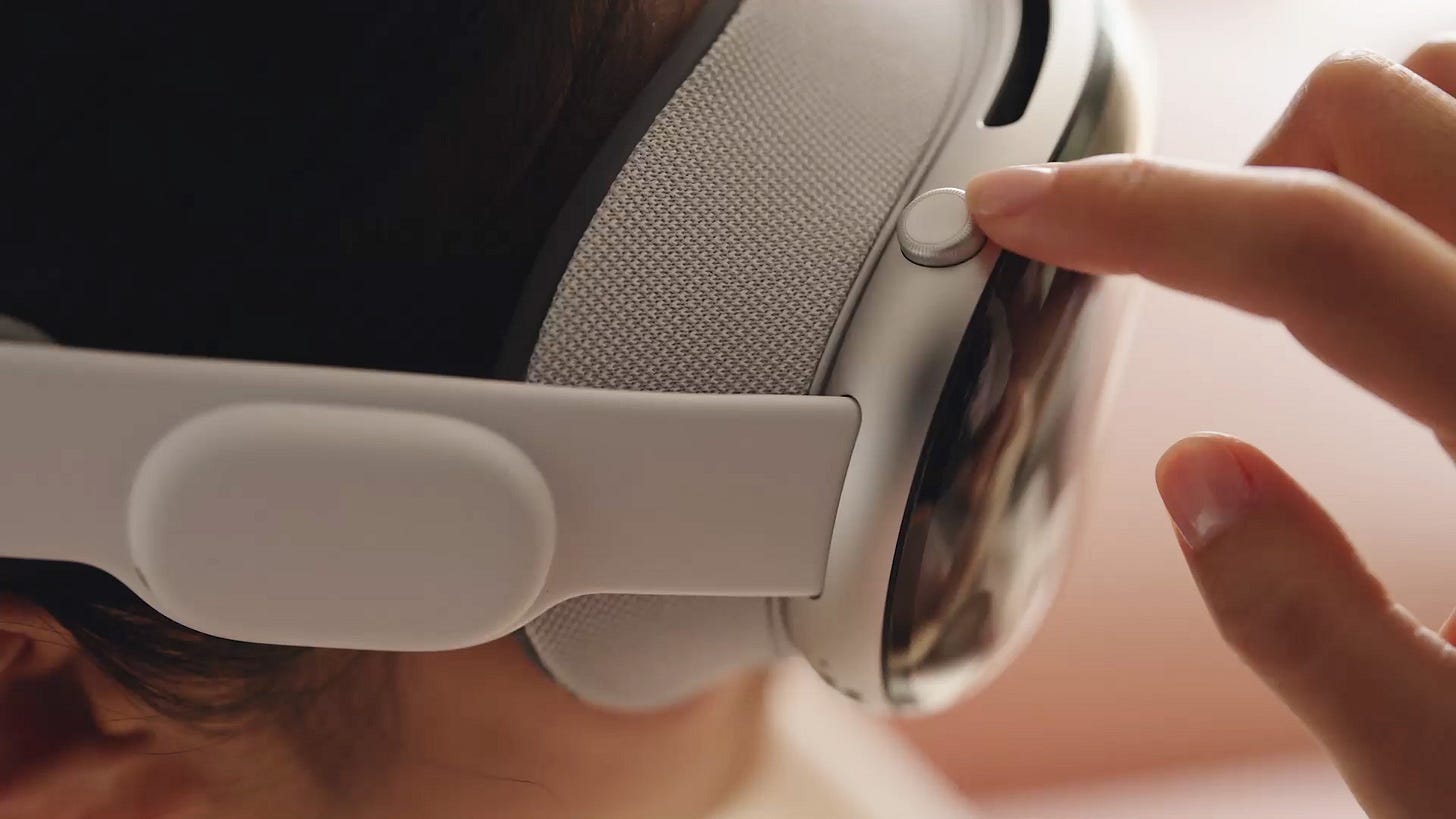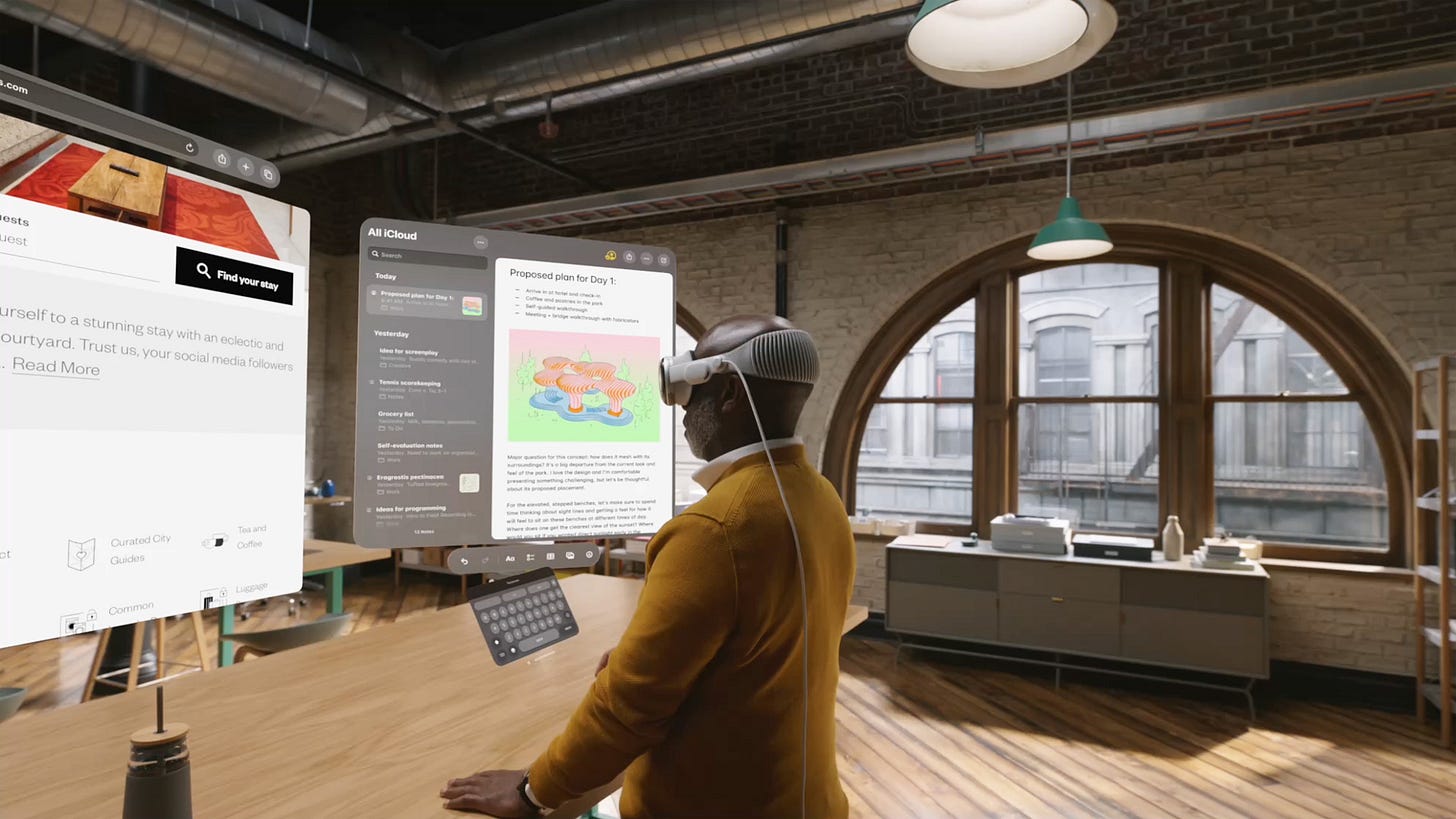Apple’s New Futuristic Vision is Spatial
Apple, the most prominent company in the world, is initiating a new era of spatial computing with a groundbreaking device at the intersection of the reality and the virtual called the Apple Vision Pro
For the past two decades, Apple has been the most influential and most prominent company in the world. The American company, founded and pioneered by the charismatic visionary Steve Jobs, has recently announced its long anticipated Augmented and Virtual Reality headset, called the Apple Vision Pro. This announcement was part of their annual WWDC (World Wide Developer Conference) held in Cupertino in California and showcased new updates, features and devices coming to their lineups for the next following months.
Apple excels in setting the industry standards in the tech world which tremendously impacts the culture as a result. For instance, the first iPhone is considered to be the blueprint for modern smartphones and has influenced the way humans share, play, work and connect. iTunes and the iPod revolutionized music consumption and streamlined the process of acquiring and organizing music. When Apple decides to enter an industry, it is likely to change forever.
With its new device, Apple is initiating a new era of computing, one which will be special and spatial. The Apple Vision Pro headset marks a major competitive threat in this space to other worthy contenders in the likes of Meta.
This article explores how Apple will distinguish itself from Meta which has been long and well established in this space, with a device that has sparked a vivid reaction online through the state of Spatial Computing and the philosophical differences in both companies.
THE STATE OF SPATIAL COMPUTING
It is 2007, and Steve Jobs unveils the first iPhone, which remains one of the most groundbreaking technologies ever created. During the presentation, Jobs famously stated, "the greatest pointing device is the human finger." The touch screen has unlocked new ways to interact with phones and allowed for the development of new gesture systems. Instead of using a stylus or a controller, input comes only from human fingers. However, mobile computing is still limited to the bounds of a screen. In the 2010s, Tech Companies in the likes of Meta, HTC and Snapchat have revisited new ways to interact with digital interfaces with Virtual Reality (VR) and Augmented Reality (AR). Spatial Computing represents an evolution of the input device from 2D to depth.
VR and AR have existed for over three decades. However, it wasn't until the 2010s that more companies began to introduce these technologies to wider audiences for commercial purposes. VR is commonly used in entertainment applications, such as video games and 3D cinema. It refers to a computer-generated environment with objects and scenes that make the user feel fully immersed in their surroundings. This technological achievement is made possible through the use of a Virtual Reality headset.
Meta, previously known as The Facebook Company, has taken advantage of the Covid-19 pandemic and remote work to rebrand itself around the Metaverse. It refers to a shared virtual reality space that encompasses multiple interconnected digital environments. Meta has since released different versions of their Meta Quest headset. Today, the company is considered to be a leader in this space and has attracted plenty of gamers, with nearly 20 million headsets sold according to The Verge.
Compared to VR, AR is less intimidating because it overlays digital graphics onto the real world, bringing you closer to reality. It can be used on smaller devices such as AR smart glasses, AR wearable devices, and smartphones. For example, tech giant Microsoft has created an advanced and innovative AR headset called Microsoft Hololens, which helps boost efficiency and productivity by displaying virtual elements over the real world using see-through holographic lenses.
APPLE’S NEW FUTURISTIC VISION
History has shown that every time Apple enters a new market, it changes the game forever. Once again, the new Apple Vision Pro headset has sparked online conversations thanks to its elegant and unique design, as well as the high level of engineering the Cupertino firm has put into it. As always, Apple stands out from the rest of the industry by having a different philosophy and vision.
Compared to other prominent tech companies that have embraced VR and AR, Apple has chosen to use a term that has not yet been widely adopted by the general public: Spatial Computing. This is part of their marketing strategy and positioning as trendsetters and distinguished actors. By doing so, Apple controls the sentiment around this term and can avoid potential downturns and changes in the future, which cannot be said for words like VR, AR, Metaverse, and even Artificial Intelligence.
Additionally, Apple's latest device does not require any controller and instead uses the human finger as its primary input, similar to the iPhone. It improves familiar gestures while also introducing new input methods, such as eye tracking, intent predictions, and natural language. Initial reports indicate that eye tracking is particularly impressive, thanks to infrared sensors and cameras that can scan your iris and follow your gaze. The pinch motion is now the gesture used for selection.
The firm is producing a high-end device aimed at a specific demographic: professionals and tech enthusiasts, hence the name 'Pro'. In contrast, its main competitor, Meta, is making fairly similar devices more affordable to reach a wider audience. Though the majority of the online community was impressed with the new release, Meta CEO Mark Zuckerberg responded unimpressed, claiming that Apple's new device is too expensive ($3500) and does not surpass his company's efforts. He also claims that the Meta Quest is more designed for use cases involving entertainment and social experiences. However, Apple offers more than just a VR experience. Its ability to switch between VR and reality, as well as its finger-controlled interfaces, provide a more natural and comfortable experience for beginners. With impressive eye tracking, users can even use iPhone apps like Messages, FaceTime, Safari, Music, Photos, Mail, and even Notes while still interacting with the real world. In contrast, Meta is more focused on gaming activities and fully immersive virtual worlds.
Furthermore, Apple's new device is even more distinctive because of its ties with the Apple ecosystem. In fact, it's possible for a user to display the screen of their MacBook directly onto the headset and use the real world as a canvas to create, work, share, connect and watch shows and games. Keyboards and trackpads can also be added to the workflow in that way.
With its advanced technology and sleek design, Apple Vision Pro has the potential to revolutionize the way we interact with the digital world. It will be interesting to see how it affects the Spatial Computing industry and how other companies will respond to this new development.
Although the current price of the device is set at $3500, the 'pro' naming suggests that there may be a more affordable version of the headset released in the future. This would open up the market to a wider range of consumers and enable more people to experience the benefits of this ground-breaking technology. Additionally, with the rise of virtual events and remote work, the Apple VR headset could become an essential tool for professionals in a variety of industries, from gaming to healthcare.
Overall, the release of the Apple VR headset has generated a lot of excitement and buzz, and it is sure to be a major player in the world of spatial computing for years to come.
Be part of STEELO, a community-based platform that covers the intersection between fashion, music, culture and tech by bridging communities across the UK, the US, Europe and Africa.
Join the STEELO Forum to get involved today and subscribe to stay up to date with everything STEELO.
Download STEELO today and explore music culture through a new video experience never seen before.

